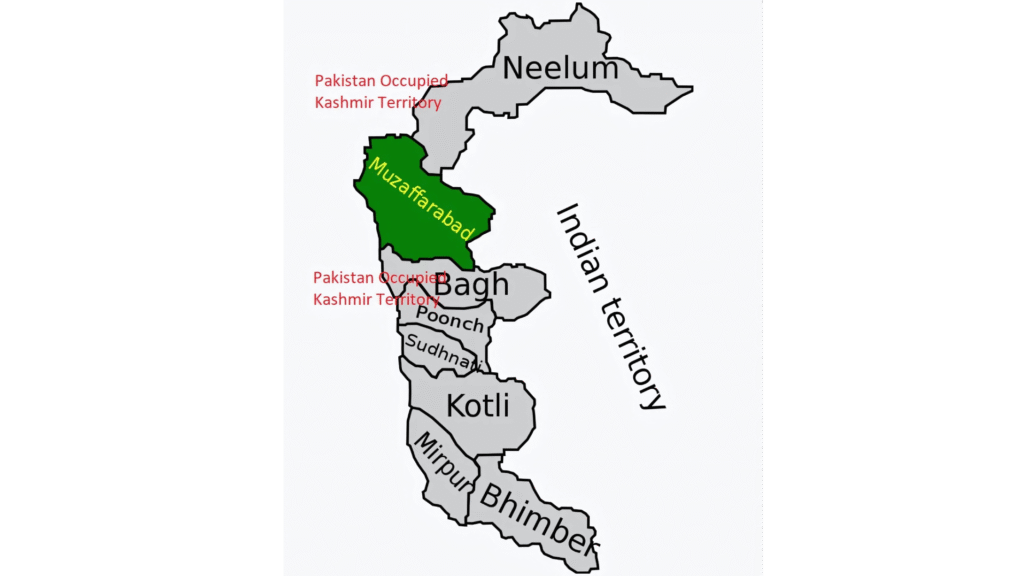In the early hours of May 7, 2025, India launched Operation Sindoor, a meticulously coordinated military operation targeting nine terrorist camps in Pakistan and Pakistan-occupied Kashmir (PoK). This decisive action was a direct response to the horrific Pahalgam terror attack on April 22, 2025, which claimed the lives of 25 Indian tourists and one Nepali guide. Marked by both shock and solemn resolve, Operation Sindoor underscored India’s unwavering stance: terror attacks will face a firm yet measured response. This extended exploration delves into the operation’s background, execution, global reactions, economic impacts, security implications, and expert perspectives, offering a comprehensive view of a pivotal moment in South Asian geopolitics.

Background: A History of Tensions
The Pahalgam Catalyst
The Pahalgam attack, executed in the serene Baisaran Valley, was a calculated act of terror that shook India. Claimed by a Lashkar-e-Taiba offshoot, the attackers separated men from women, executed the men, and spared the women to relay a chilling message to Prime Minister Narendra Modi: “Go, tell Modi.” This brutality, killing 26 people including a Nepali guide, reignited national outrage and demanded a robust response. The attack’s timing, amid heightened India-Pakistan tensions, amplified its impact, recalling past incidents like the 2019 Pulwama attack, which killed 40 Indian security personnel and led to the Balakot airstrikes.

India-Pakistan Relations
India and Pakistan have been locked in a contentious relationship since their 1947 partition, with conflicts over Kashmir fueling three wars and numerous skirmishes. Pakistan’s alleged support for militant groups like Lashkar-e-Taiba and Jaish-e-Mohammed has been a persistent thorn, with India accusing its neighbor of harboring terrorists. By spring 2025, diplomatic ties were strained: India had suspended the Indus Waters Treaty, closed the Attari-Amritsar border, revoked Pakistani visas, and conducted air-defense drills, signaling a readiness for action. Operation Sindoor, named after the vermilion symbolizing mourning, was both a retaliation and a strategic message of India’s resolve, as noted by former Defence Minister Sharad Pawar.
Operation Sindoor: Execution and Targets
Strategic Planning and Precision
Launched at 1:44 AM on May 7, 2025, Operation Sindoor was a tri-services operation involving the Indian Army, Air Force, and Navy. Utilizing Rafale jets, SCALP cruise missiles, HAMMER precision bombs, and loitering munitions, the strikes targeted nine terrorist facilities without Indian aircraft entering Pakistani airspace. The operation, lasting under 30 minutes, was described as “focused, measured, and non-escalatory” by the Indian Defence Ministry, emphasizing that no Pakistani military bases or civilian areas were hit. Colonel Sophia Qureshi, briefing the media, highlighted the operation’s aim to “break the backbone of terrorism.”

Targeted Terrorist Infrastructure
The strikes hit nine key facilities linked to Lashkar-e-Taiba, Jaish-e-Mohammed, and Hizbul Mujahideen, identified through years of intelligence gathering. The targets included:
| Target Name | Location | Affiliation |
|---|---|---|
| Markaz Subhan Allah | Bahawalpur, Pakistan | Jaish-e-Mohammed |
| Markaz Taiba | Muridke, Pakistan | Lashkar-e-Taiba |
| Sarjal | Tehra Kalan, PoK | Jaish-e-Mohammed |
| Mehmoona Joya | Sialkot, Pakistan | Hizbul Mujahideen |
| Markaz Ahle Hadith | Barnala, Pakistan | Lashkar-e-Taiba |
| Markaz Abbas | Kotli, PoK | Jaish-e-Mohammed |
| Maskar Raheel Shahid | Kotli, PoK | Hizbul Mujahideen |
| Shawai Nalla Camp | Muzaffarabad, PoK | Lashkar-e-Taiba |
| Syedna Bilal Camp | Muzaffarabad, PoK | Jaish-e-Mohammed |
Indian sources reported 70-90 terrorists killed, significantly disrupting these groups’ operations, though Pakistan claimed civilian casualties, a point of contention (Al Jazeera).

Domestic and Political Reactions
India’s Unified Support
Operation Sindoor garnered widespread domestic support. Prime Minister Narendra Modi stated it sent the “right message” against terrorism, while Defence Minister Rajnath Singh posted “Bharat Mata ki Jai” on X. Congress leader Rahul Gandhi tweeted, “Proud of our Armed Forces. Jai Hind!” Public figures like Sachin Tendulkar joined in, writing, “Fearless in unity… there’s no room for terrorism in this world.” Survivors of the Pahalgam attack, like Sangita Ganbote, expressed gratitude, noting the operation’s name honored the women widowed in the attack.
“Justice is served. Jai Hind!” – Indian Army Eastern Command
Pakistan’s Outrage
Pakistan condemned the strikes as a “blatant act of aggression.” Prime Minister Shehbaz Sharif called it an “act of war” and sought U.N. Security Council intervention. Jaish-e-Mohammed chief Masood Azhar claimed 10 family members were killed, vowing retaliation. Pakistan closed the Kartarpur Sahib corridor and tightened security, while its military reported civilian casualties, a claim India disputed.
International Responses
The global community urged restraint. U.N. Secretary-General António Guterres called for “maximum military restraint,” warning of the catastrophic consequences of a nuclear conflict. U.S. President Donald Trump expressed hope for a quick resolution, with Secretary of State Marco Rubio monitoring the situation closely. Israel backed India’s right to self-defense, while Japan’s Prime Minister conveyed understanding of India’s concerns. China urged calm, affirming opposition to terrorism but stressing regional stability (The Hindu). India’s proactive briefings to allies like the U.S., U.K., and Russia helped garner implicit support, though most nations prioritized de-escalation.

Economic and Market Impacts
Indian markets saw a slight dip, with the Sensex falling 0.2% but stabilizing later, supported by RBI reserves. The rupee weakened marginally by 18 paise (LiveMint). Pakistan’s KSE-100 index plummeted 5-6%, reflecting economic fragility (The Economic Times). Air travel faced disruptions, with cancellations in Srinagar and advisories from airlines like Air India (The Economic Times). Border trade, including the Attari crossing, was halted, though analysts suggested temporary impacts if de-escalation occurs.
Security Outlook
Post-strike, both nations remain on high alert. Pakistan’s artillery shelling along the LoC killed three Indian civilians, prompting a “proportionate” response. India conducted nationwide defense drills, simulating air raids across 244 districts. Pakistan sought U.N. intervention, signaling diplomatic pressure. Analysts predict a tense wait-and-see phase, with India likely avoiding further strikes and Pakistan under domestic pressure to respond cautiously.

Expert Analyses
Defense expert Nitin Gokhale described the Pahalgam attack as “barbaric,” praising Operation Sindoor’s precision (Times of India). Analysts noted the operation’s restraint, avoiding military targets to limit escalation. Critics, like Congress leader Rashid Alvi, questioned whether it fully neutralized the threat, urging sustained action (India Today). The operation’s long-term efficacy depends on addressing Pakistan’s alleged support for terrorism, requiring diplomatic and international pressure.
Frequently Asked Questions (FAQs)
What was Operation Sindoor?
It was a military operation on May 7, 2025, targeting nine terrorist camps in Pakistan and PoK in retaliation for the Pahalgam attack.
Why was it named “Sindoor”?
“Sindoor” (vermilion) symbolized mourning for women widowed in the Pahalgam attack, reflecting emotional significance.
Which groups were targeted?
Lashkar-e-Taiba, Jaish-e-Mohammed, and Hizbul Mujahideen are accused of planning the Pahalgam attack.
Did India violate Pakistani airspace?
No, strikes were launched from Indian territory using long-range munitions.
What was the international reaction?
Mixed, with support from Israel and Japan, and calls for restraint from the U.N. and U.S.
Could this lead to war?
Tensions are high, but global pressure may prevent escalation.
Conclusion
Operation Sindoor was a landmark demonstration of India’s resolve to combat terrorism with precision and restraint. By targeting nine terror camps, India sent a clear message while minimizing civilian harm. The operation won broad domestic support and selective international backing but heightened regional tensions. The path forward hinges on de-escalation and international cooperation to address terrorism, ensuring South Asia avoids a broader conflict.
Call to Action:Stay informed on global security! Share this article, subscribe for updates, and comment below—what are your thoughts on Operation Sindoor?
References
- The Hindu
- The Economic Times
- Times of India
- Al Jazeera
- Press Information Bureau
- India Today
- LiveMint
- Wikimedia Commons

